13 Red Flowering Shrubs That Make Gardens Pop
Looking to add vibrant color to your garden? Red flowering shrubs are a fantastic way to bring bold, eye-catching hues to your landscape. Whether you’re looking for low-maintenance options or plants that bloom year after year, these shrubs offer a range of stunning red shades to brighten up any garden. From rich crimson to soft scarlet, these plants not only add beauty but also attract pollinators, making them a great choice for any gardener.
This post may contain affiliate links, which helps keep this content free. Please read our disclosure for more info.
Red-Leafed Japanese Maple (Acer palmatum)
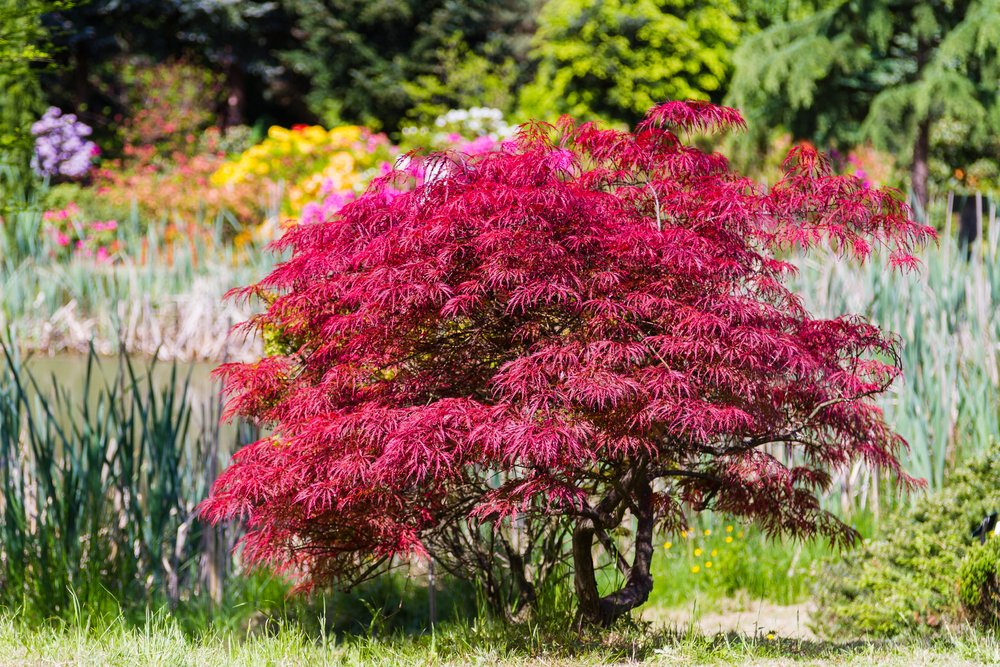
The Red-Leafed Japanese Maple is a standout shrub known for its vibrant red foliage that provides dramatic color throughout the year. In spring, this plant produces small clusters of red flowers, adding a soft burst of color before the foliage fully emerges. The delicate flowers contrast beautifully with the red leaves, creating a harmonious blend of colors in your garden. This shrub thrives in partial shade and prefers moist, well-drained soil, making it ideal for gardens with dappled sunlight or sheltered spots.
In the fall, the red leaves of this shrub turn even deeper shades, offering an enchanting autumn display. Its compact size makes it perfect for smaller gardens or as a feature plant in larger landscapes. The Red-Leafed Japanese Maple is also low-maintenance, requiring minimal pruning, and it can serve as an elegant focal point in any garden design.
Red Hot Poker (Kniphofia uvaria)
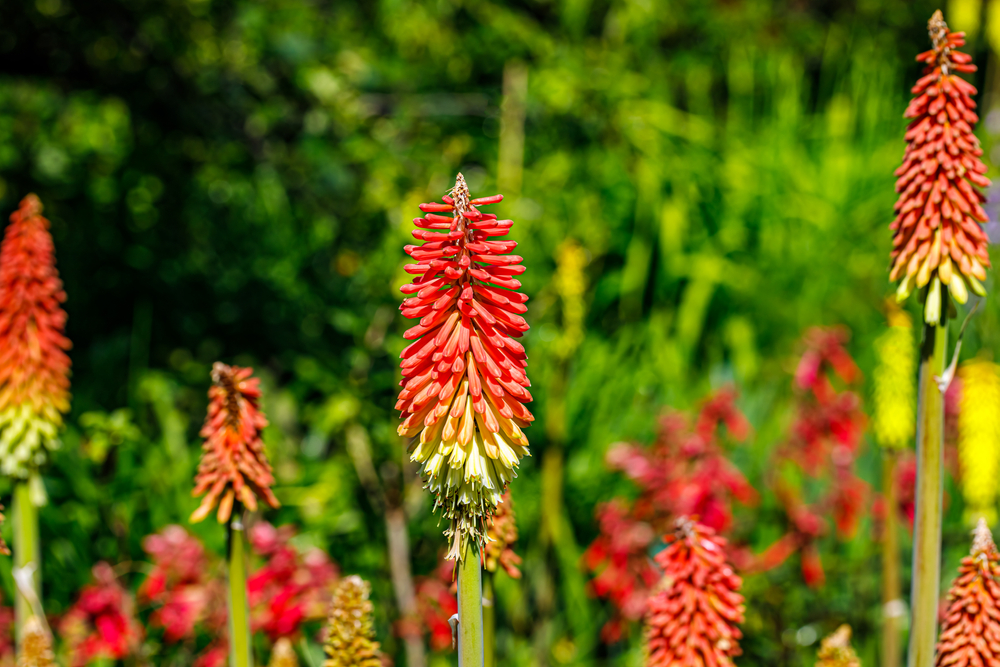
Red Hot Poker is a striking shrub that adds a bold splash of red to any garden. Its tall, spiky flowers resemble a fiery torch and bloom from late summer into early fall. The flowers are tubular, and their unique shape and intense red hue draw attention, making them an excellent focal point in garden designs. The plant also attracts hummingbirds and butterflies, providing both beauty and ecological benefits. Its tall, upright growth habit makes it ideal for the back of garden beds or as a standalone feature.
This hardy plant thrives in full sun and well-drained soil, making it perfect for sunny garden spots. Red Hot Poker is drought-tolerant once established, making it a great choice for low-maintenance gardens. The plant’s narrow, grass-like leaves provide an attractive contrast to its fiery blooms, ensuring visual interest even when the flowers are not in bloom. Red Hot Poker is a dramatic addition to any garden, offering vibrant color and texture that lasts throughout the growing season.
Bottlebrush (Callistemon citrinus)

The Bottlebrush shrub is a striking choice for any garden with its vivid red, spiky flowers that resemble a bottlebrush. These flowers bloom in spring and summer, attracting pollinators like bees and hummingbirds. The plant’s unique flowers are tubular, and when in full bloom, they stand out with their bright red hue, adding an exotic feel to the garden. Bottlebrush shrubs are versatile and can grow in a range of soil types, though they prefer well-drained, sandy soil.
This shrub thrives in full sun and is drought-tolerant once established, making it an excellent choice for xeriscaping. In addition to the vibrant flowers, the shrub’s dense, green foliage provides a perfect backdrop, ensuring that it remains attractive even when not in bloom. Bottlebrush is ideal for creating a dramatic focal point or as part of a colorful hedge.
Azalea (Rhododendron spp.)
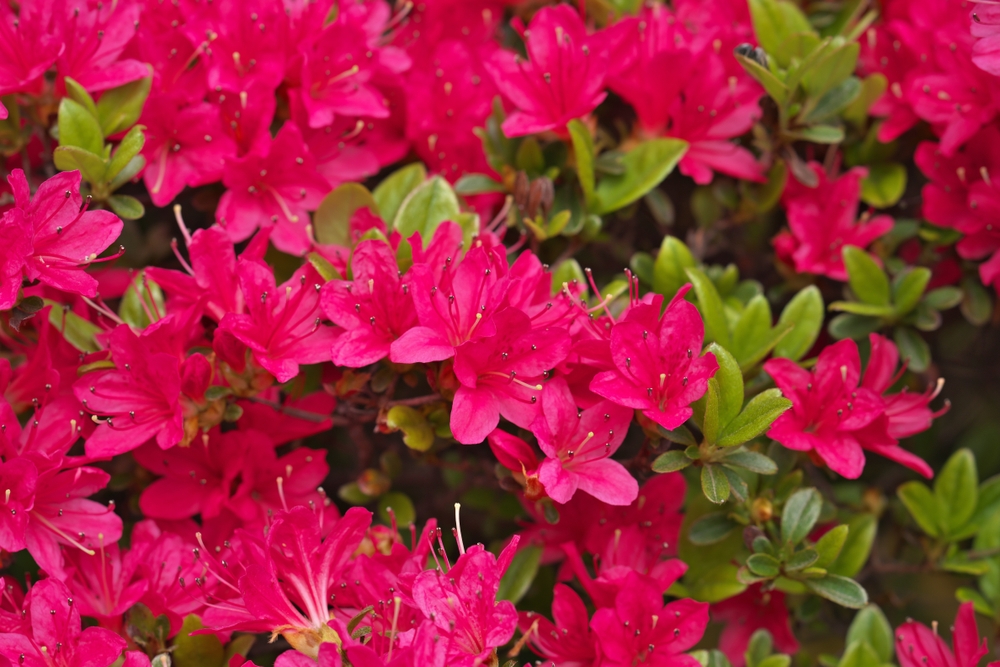
Azaleas are classic red-flowering shrubs that bring a burst of vibrant color to gardens in early spring. Their striking red blossoms range from soft pink-red to deep crimson, creating an array of shades that brighten up any space. Azaleas are known for their beauty and can be planted in groups to create a stunning, colorful display. These shrubs thrive in well-drained, acidic soil and prefer partial shade, making them a great choice for woodland gardens or areas with limited direct sunlight.
In addition to their floral beauty, azaleas have glossy, evergreen foliage that adds texture to the landscape year-round. They are relatively easy to care for but may need some attention to pruning and feeding to maintain their optimal growth. Azaleas are perfect for creating colorful borders or planting along walkways to add a dramatic pop of color in early spring.
Hibiscus (Hibiscus rosa-sinensis)
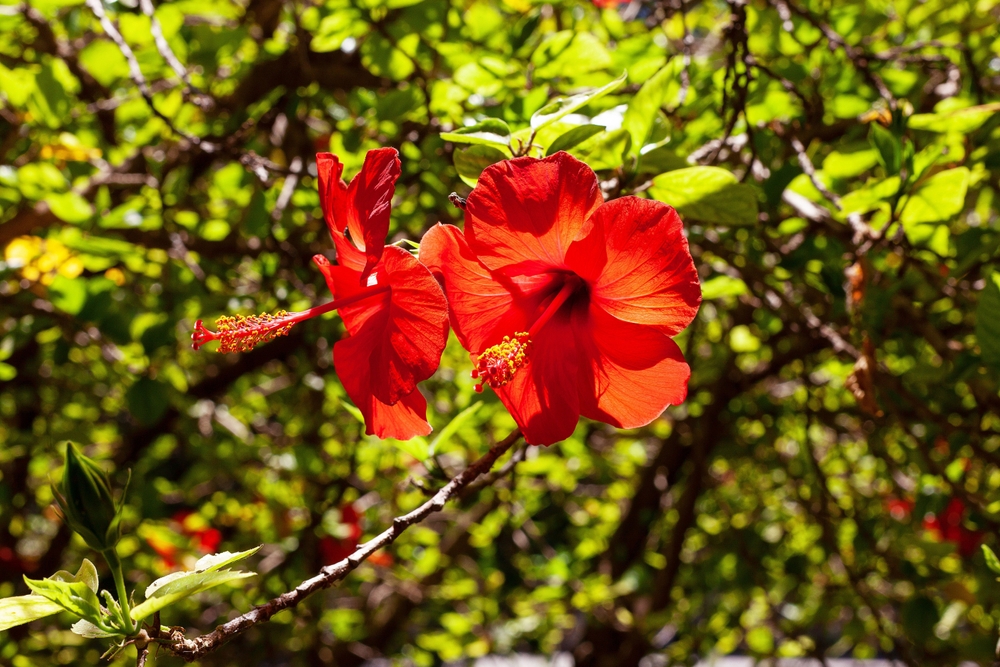
Hibiscus shrubs are known for their large, showy flowers, which come in a wide range of colors, with red being one of the most stunning. These flowers can grow up to 6 inches across, creating an impressive display in the summer months. The blooms last for a day, but new flowers continue to emerge throughout the season, ensuring that the shrub remains colorful. Hibiscus plants prefer full sun and well-drained soil, and they can tolerate periods of drought once established.
This shrub’s bold, tropical appearance makes it an excellent choice for adding an exotic feel to gardens. It can be grown as a shrub or pruned to form a small tree, providing versatility in how it can be incorporated into garden designs. With its striking red flowers and glossy, dark green foliage, hibiscus is sure to draw attention and add flair to any garden setting.
Red-Flowering Currant (Ribes sanguineum)
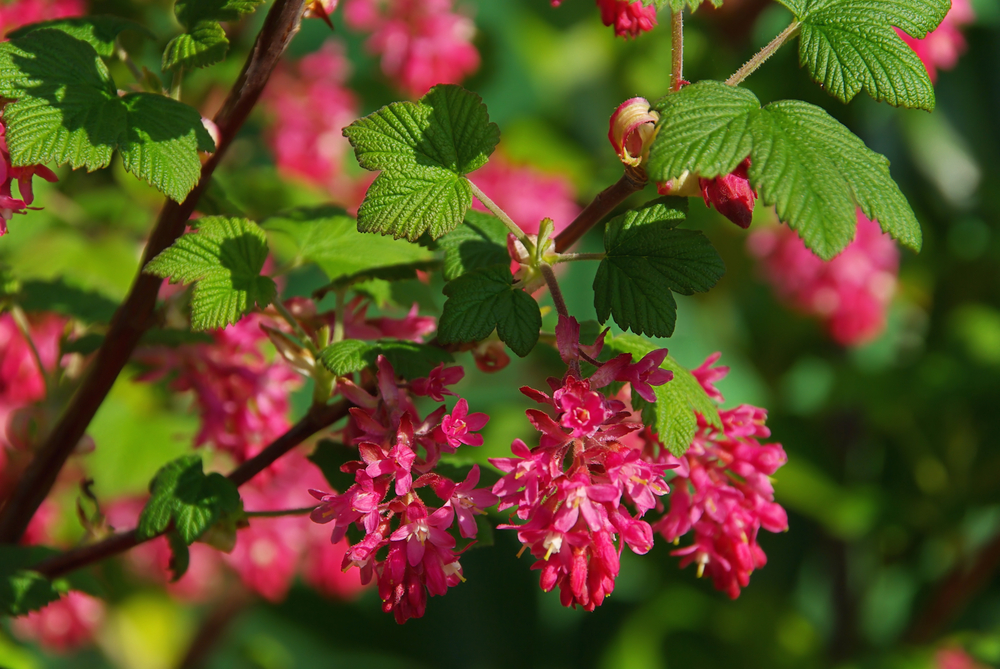
The Red-Flowering Currant is a deciduous shrub that blooms with clusters of small, bell-shaped flowers in early spring. The flowers are bright red and appear before the leaves fully emerge, creating a vivid display. This shrub is highly valued for its ability to attract hummingbirds and other pollinators with its nectar-rich flowers. It prefers moist, well-drained soil and can grow in partial to full sun, making it adaptable to various garden conditions.
In addition to its colorful flowers, Red-Flowering Currant produces dark green foliage that turns yellow in the fall, offering a beautiful seasonal change. This shrub is relatively low-maintenance, requiring little pruning, and it can be used as a foundation plant, in a mixed border, or as a hedgerow. Its early spring blooms bring joy to gardens just as the cold weather starts to recede.
Syringa (Syringa vulgaris) – Red Lilac
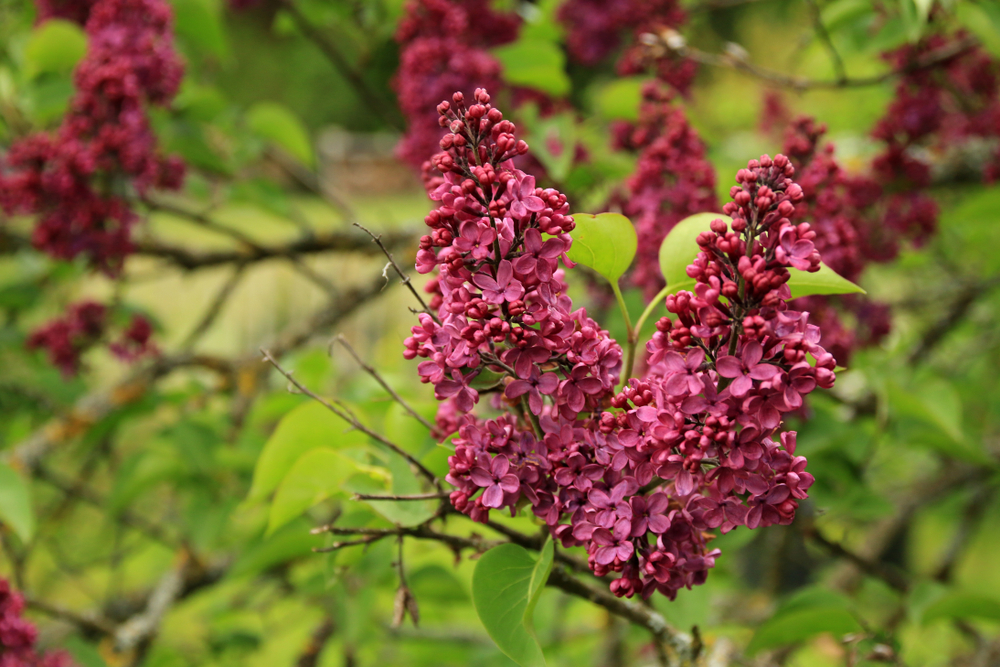
Syringa, commonly known as lilac, is a beloved flowering shrub with varieties that include beautiful red-flowering types. The red lilac blooms with dense clusters of small, fragrant flowers that offer a delightful burst of color in late spring. The deep red flowers are complemented by the shrub’s glossy, dark green foliage, which creates a stunning contrast. This shrub attracts pollinators, such as bees and butterflies, making it an excellent addition to a wildlife-friendly garden.
Lilacs thrive in full sun and well-drained soil, requiring minimal care once established. They can grow quite tall, making them ideal for use as background plants in flower beds or as a focal point in larger gardens. With their vibrant color and sweet fragrance, red-flowering lilacs offer both visual and aromatic appeal, making them a great choice for adding an unforgettable sensory experience to your garden.
Loropetalum (Loropetalum chinense)
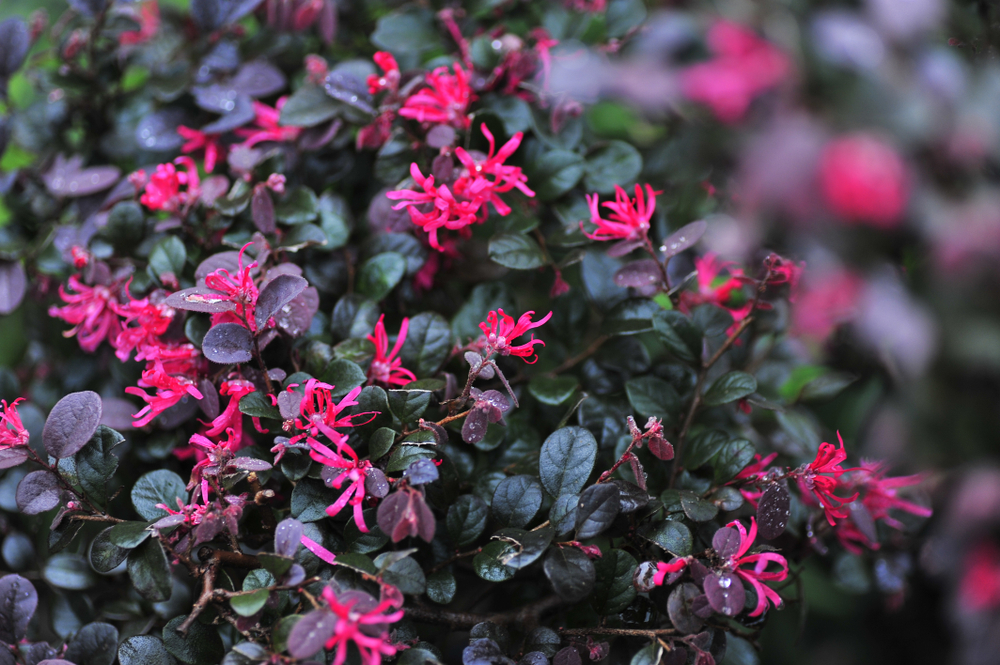
Loropetalum, also known as Chinese fringe flower, is a versatile shrub that produces striking red or magenta flowers. The flowers are spidery and delicate, offering a unique texture and color contrast to the shrub’s dark purple or burgundy foliage. These plants bloom in early spring, and depending on the variety, they may continue flowering intermittently throughout the summer. Loropetalum thrives in well-drained, acidic soil and prefers partial to full sun, though it can tolerate some shade.
In addition to its colorful blooms, Loropetalum’s foliage provides year-round visual interest. The dark, almost black leaves make the bright red flowers pop even more, creating a stunning display. This shrub’s compact growth habit makes it ideal for planting in smaller spaces or as a foundation plant along walkways or garden beds.
Spirea (Spirea japonica)
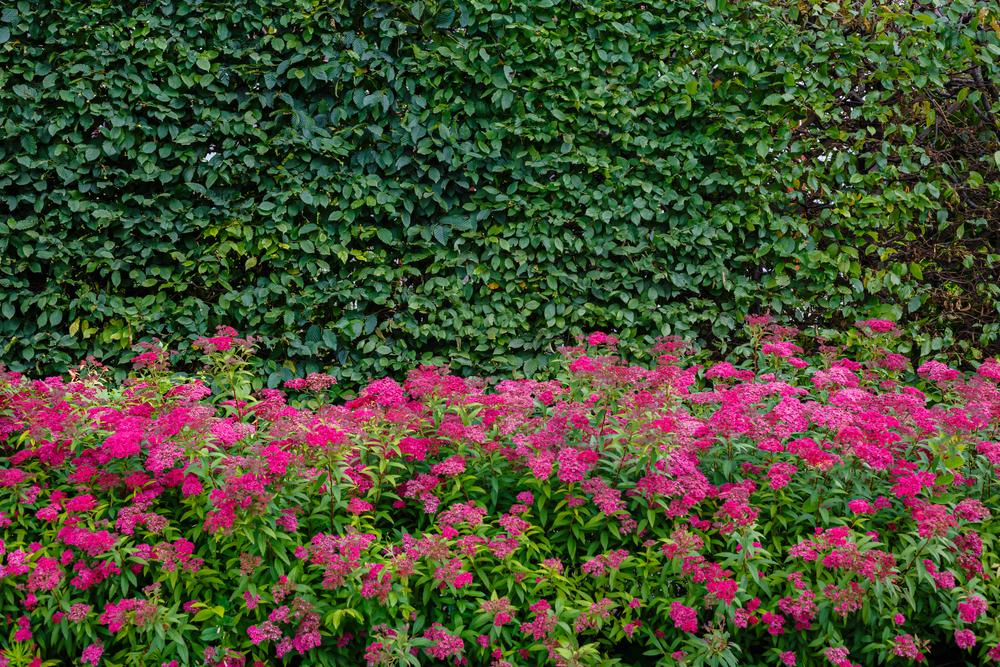
Spirea shrubs are known for their profuse blooms that come in shades of red, pink, and white. The red varieties produce clusters of small, rose-red flowers that cover the plant in late spring and early summer. Spirea is a low-maintenance shrub that thrives in full sun and well-drained soil, and it is highly tolerant of a range of soil types. It is a hardy plant that does well in both cold and warm climates, making it a popular choice for many gardens.
Aside from the beautiful red flowers, spirea has vibrant green foliage that turns yellow or red in the fall. It is a versatile plant that can be used in mixed borders, as a ground cover, or as part of a hedge. With its abundance of flowers and minimal care requirements, spirea is a great addition to any garden looking to add color and texture.
Crape Myrtle (Lagerstroemia indica)
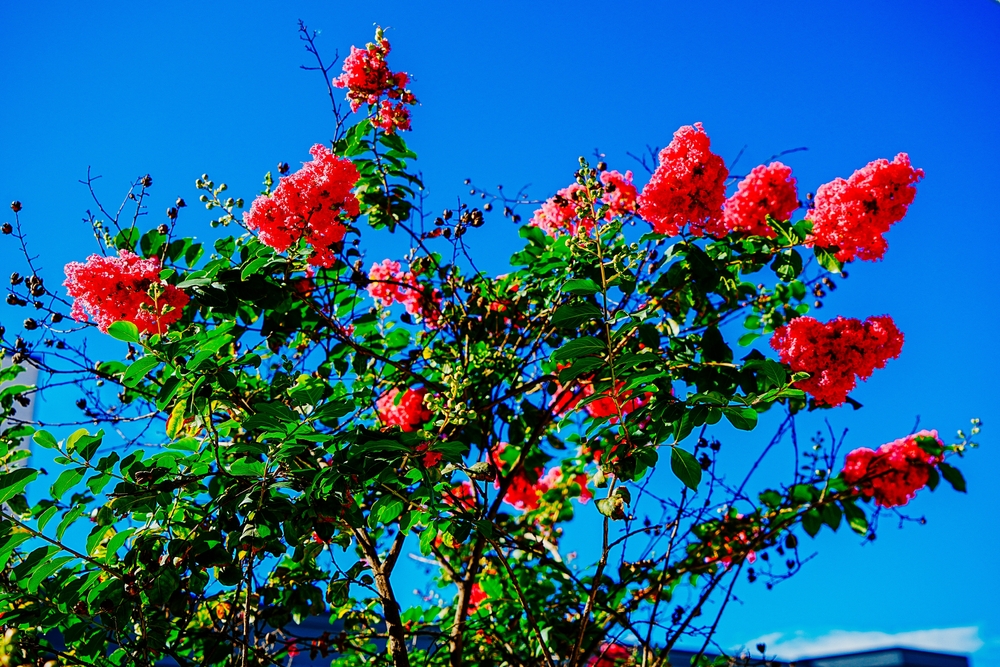
Crape Myrtle is a well-known shrub that offers stunning clusters of red flowers in mid to late summer. These flowers are large, vibrant, and resemble crepe paper, adding a striking visual element to the landscape. The shrub’s exfoliating bark provides year-round interest, making it as beautiful in winter as it is in summer. Crape Myrtle thrives in full sun and is highly drought-tolerant, making it perfect for hot, dry climates.
Beyond its impressive blooms, Crape Myrtle offers attractive, dark green foliage that changes color in the fall, creating a beautiful contrast with its summer flowers. Its upright growth habit makes it a good choice for planting as a specimen shrub or in rows as a hedge. Crape Myrtle is a versatile, long-blooming shrub that provides both visual interest and texture.
Red-leafed Weigela (Weigela florida)
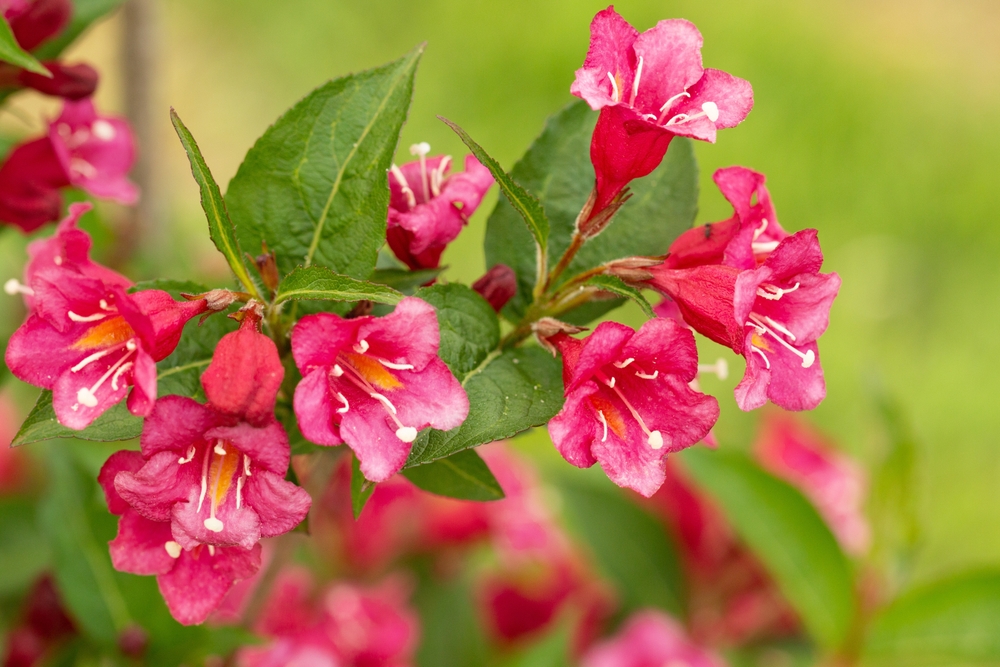
Red-leafed Weigela is a deciduous shrub that features striking red or burgundy leaves, which create a bold backdrop for its pinkish-red flowers in spring. The flowers are trumpet-shaped and appear in clusters, attracting hummingbirds and butterflies. Weigelas are easy to grow in a variety of soil types and do well in both full sun and partial shade. Their growth habit is compact, making them ideal for smaller gardens or as part of mixed borders.
In addition to its vibrant flowers, Red-leafed Weigela offers excellent fall color, with the leaves turning a rich purple or red as the season progresses. This shrub is low-maintenance, needing only occasional pruning to maintain its shape and size. Its combination of colorful flowers and foliage makes it a striking addition to any landscape.
Red-twig Viburnum (Viburnum bodnantense)
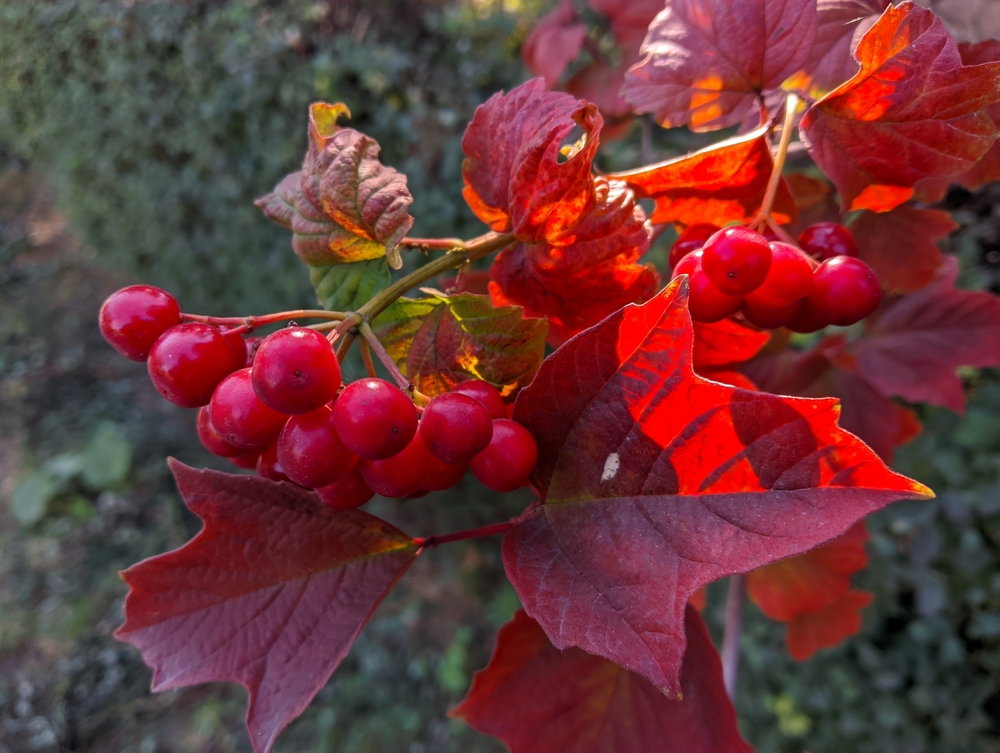
Red-twig Viburnum is a shrub that offers year-round interest with its beautiful red berries and flowers. In the late winter and early spring, this shrub produces clusters of fragrant, pink-red flowers before the leaves emerge. The bright berries that follow the blooms provide a food source for birds, adding another layer of appeal. Red-twig Viburnum grows best in well-drained soil and prefers full sun or partial shade.
The shrub’s red stems provide interest in the winter months, making it a great choice for adding structure to the garden during the off-season. It is an easy-to-grow plant that requires little maintenance, making it perfect for gardeners looking for a shrub that provides both beauty and wildlife benefits. Its vibrant red flowers and berries make it a standout in any garden.
Rose of Sharon (Hibiscus syriacus)
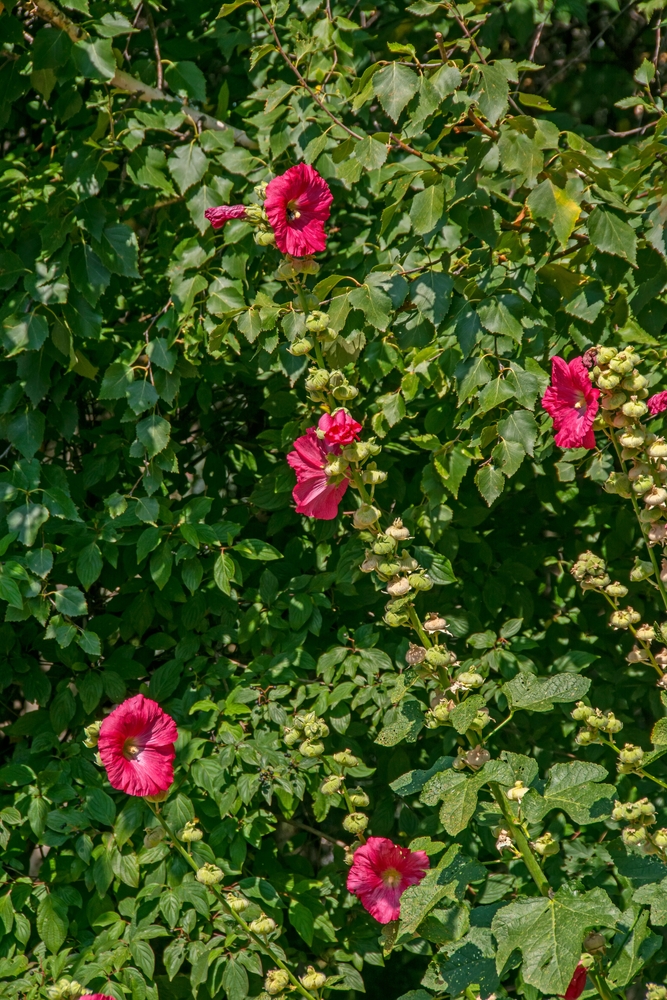
Rose of Sharon is a summer-blooming shrub that produces large, showy red flowers with a striking contrast of white centers. These flowers are quite dramatic and appear in mid to late summer, providing a burst of color when many other plants have finished blooming. Rose of Sharon prefers well-drained, slightly acidic soil and grows best in full sun. It is a hardy shrub that can tolerate drought once established, making it a great addition to low-maintenance gardens.
This shrub grows tall, making it an excellent choice for hedges or as a backdrop in the garden. In addition to its beautiful flowers, Rose of Sharon’s green foliage offers a great contrast and texture throughout the season. This shrub is perfect for adding both vertical interest and vibrant red flowers to your garden.
This article originally appeared on Avocadu.
